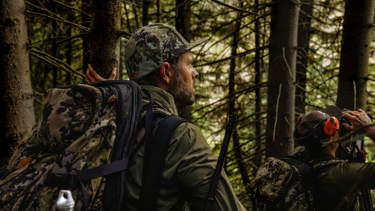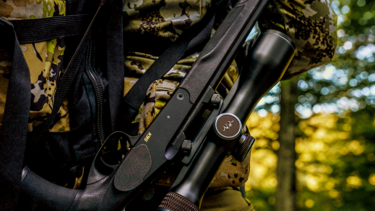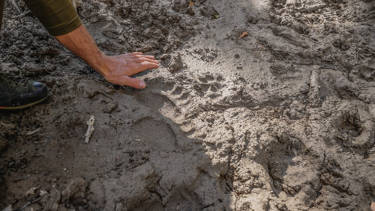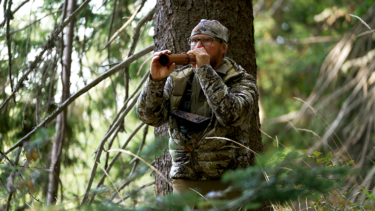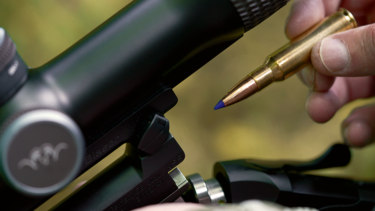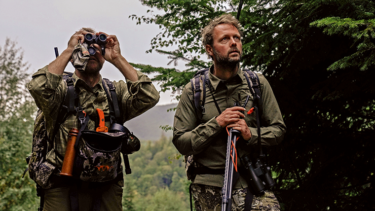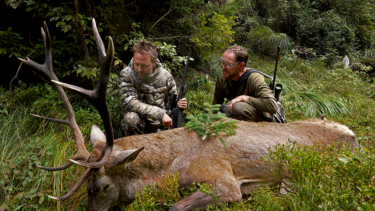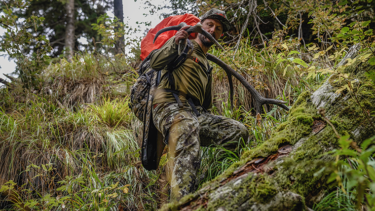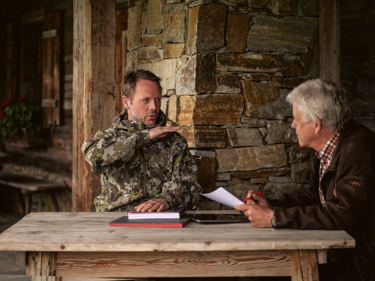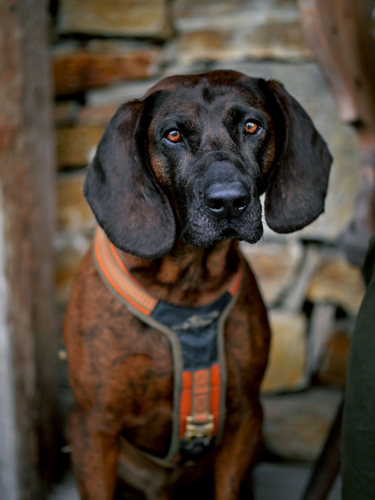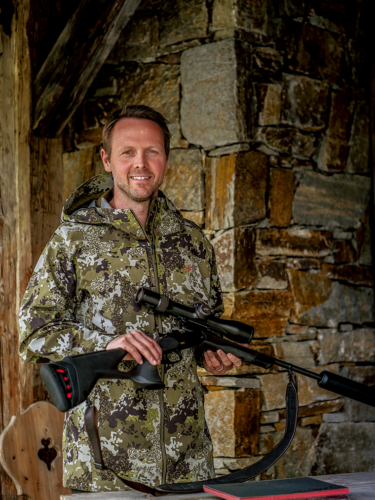Maximilian Ergert is fortunate enough to have already been hunting in several countries across the world. But it was not just his travels from northern Alaska to southern Africa where he gained many important experiences. The countless hours that he spent on local hunting grounds in the mountains were just as educational, if not more so, as they showed him how crucial being physically fit and having the best equipment are in order for hunting to be effective. So it was no coincidence that Maximilian was one of the first customers to have his reliable R8 bolt action rifle fitted with an 8.5×55 Blaser calibre barrel.
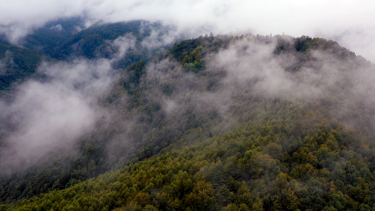
A performance test in the Carpathians
Maximilian was just as impressed by the pristine wilderness of the Far North and the incomparable atmosphere of the African bush as he was mesmerised by the Romanian Carpathians. They are considered to be one of the last refuges in Europe, where hunting is still genuinely challenging. This is a place where hunting is still genuine hunting that requires plenty of instinct and skill. And this is precisely why, for years now, Maximilian has been drawn to the wilderness of the Carpathians.
A spontaneous idea led to us being able to accompany Maximilian to the Carpathians during deer rutting season last autumn. Maximilian intended to take his new 8.5×55 calibre Blaser break action rifle on this trip – the perfect opportunity for us to bring our camera along to the hunt. And so Maximilian’s small team consisted of Blaser cameraman Max Sattler and experienced Tyrolean hunter Otto Schratz, who, along with another experienced local hunter, helped with hunting and filming.
But as they took off from Munich Airport, not even experienced mountaineer Otto could have known the exertion that awaited them all. Although Maximilian had emphasised to his two companions that the conditions in the Carpathian Mountains were tough, stories sometimes sugarcoat the reality a little. This only really dawned on Otto and cameraman Max when they saw the expanse of the mountains, which had very few paths for accessibility, with their own eyes. The two of them were also aware that bears and wolves still live here, keeping the red deer population in check. They knew that this would make hunting anything but straightforward. All the more so because all the action from the hunt was going to be documented on film.
“ Wherever you find local bears and wolves, hunting becomes much more challenging.”
The experience and instinct of the hunters led to Maximilian actually being able to shoot a mature local deer in the late evening a few days into the trip. Anyone who sees these images will be able to get a sense of the incredible suspense that built up for Maximilian and his companions. But, of course, the hunting was not over once the old beast had been shot. It was then time to retrieve the heavy animal from this totally remote area and 10 11 HUNT & HUNTER PASSION 28 cut it into rough pieces so that it could be transported down to the valley. Unfortunately, cameraman Max suffered a major mishap during this gruelling work. He injured his eye and had to take on the long, difficult descent bleeding and half blind. Although he was no longer able to come on the next hunt for Carpathian chamois, the memory of the mesmerising Carpathian Mountains will stay with him forever.
Maximilian, you have been fortunate enough to go hunting in many countries around the world. Why are you now so drawn to the Romanian Carpathians?
It’s a long story. It might have something to do with the fact that my father, who was the Director of the German Hunting and Fishing Museum in Munich for many years, raised me with very conservative hunting values. Traditions have always been very important to us in the mountains – nobody would even dare to question them. And I’m not criticising tradition, quite the opposite. But for some reason I always longed for a natural, physically demanding type of hunting that’s not about meeting certain hunting quotas for the year or accepting a generous invitation to shoot a Royal stag. I wanted my hunting to be freer and more easy-going and to learn how to rely on my own instincts. This is precisely the type of hunting the Carpathian Mountains have to offer.
“ I longed for a more natural type of hunting that is not about meeting hunting quotas.”
What did your father think of your hunting ambitions? Didn’t the two of you debate it?
Yes, of course we did. As father and son often do. He has always known that I hunt ethically. But he would never have allowed me to come with him on stalking excursions wearing camouflage, for example. It can be really useful and sensible, but he was strict in his refusal. It simply went against his traditions.
Then the two of you must have also disagreed on hunting rif les?
Of course. My father never would have dreamed of owning a rif le with a synthetic stock. For him it could only be the traditional rif le with a wooden stock. Nothing else would have ever crossed his mind.
But wasn’t there ever a moment when your father admitted you were right?
Almost! There was one time when he was working his way through the red deer shooting plan on someone else’s hunting grounds in poor weather conditions in late autumn. I can’t remember why, but he borrowed one of my rifles. And it just happened to be a rifle with a synthetic stock! Although he never admitted to being a fan of synthetic stocks after this, he did stop condemning them. The incessant rain was probably to thank for this.
Maximilian, let’s talk about your preferred rifles: Given all the experience you have, what do you now think is the most important thing about a rifle?
That’s easy: It needs to be 100% reliable and always precise with the shot, in all weather conditions. My R8 with a synthetic thumb hole stock is absolutely unbeatable here. The fact that it is also very short is another benefit. Especially if a silencer is used.
Which are your favourite calibres?
I’ve tried out quite a few. Nevertheless, I usually head out with a .300 Win. Mag. When it comes to bigger game, this larger calibre would be my first choice. But I have also recently had a soft spot for the 8.5×55.
Why is this?
These days I prefer to own just the one rifle. I can always blindly trust it, no matter where I am. With the 8.5, I can hunt for pretty much any animal and I’m always well equipped, especially as it is available in a range of different loads. The 8.5×55 also has many other benefits compared to the .300 Win. Mag. The larger bullet diameter, for example, is very beneficial, especially in lead-free loads. The 8.5 can also reach astoundingly high velocities, even with short barrels. So even when I attach a silencer to the rifle, I still have a very compact weapon with a very long bullet trajectory.
But you still treated yourself to a break action rifle for hunting in Romania.
Yes, there were two reasons for this. First of all, the K95 is lighter than my R8. On the long routes through the Carpathians, this is much more comfortable in the long run. Secondly, it is even faster to dismantle and easier to stow in my rucksack. But it goes without saying that I stuck to the 8.5×55 calibre. When it comes to Europe, you really can say this calibre is one for all. Where else can you say that?


